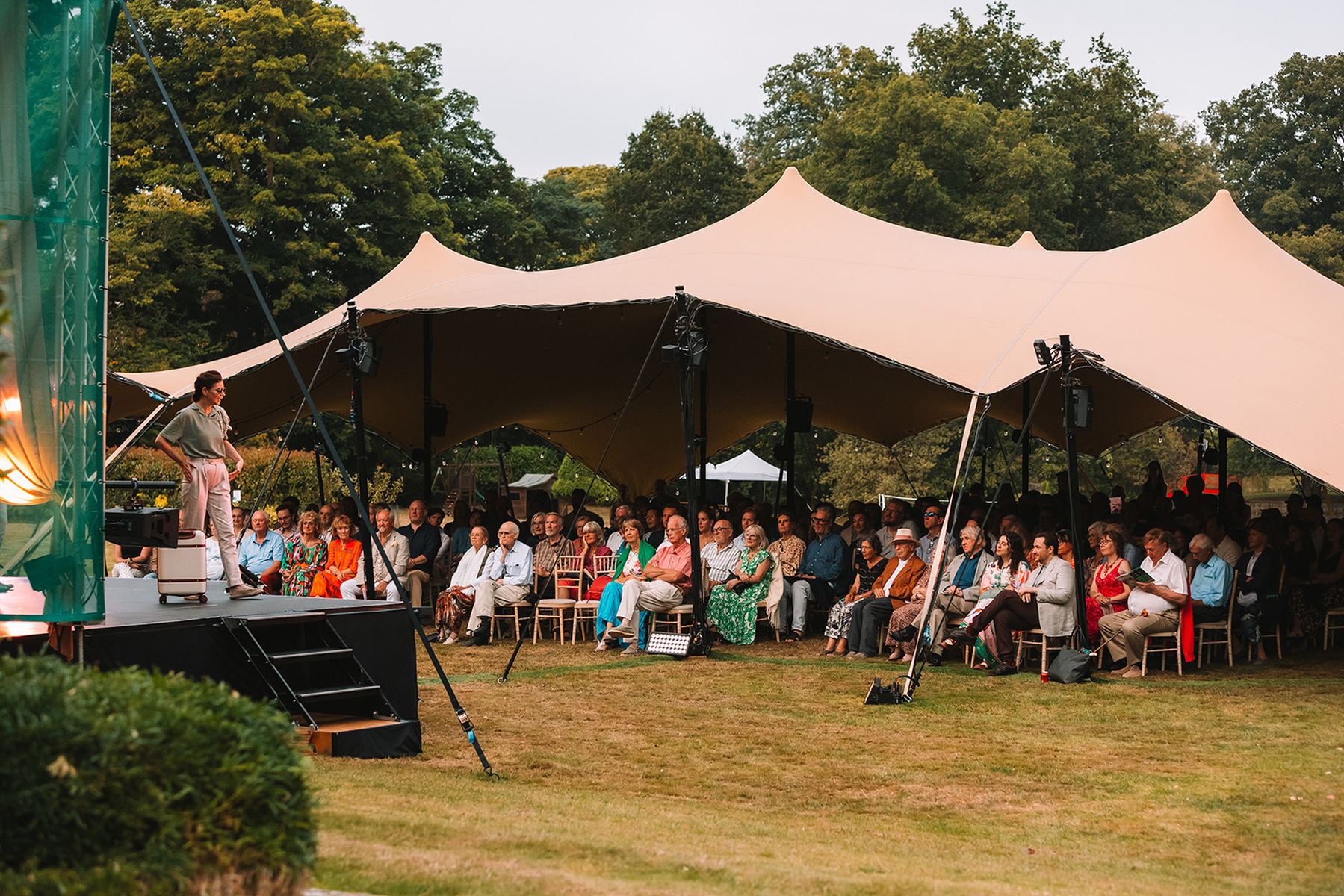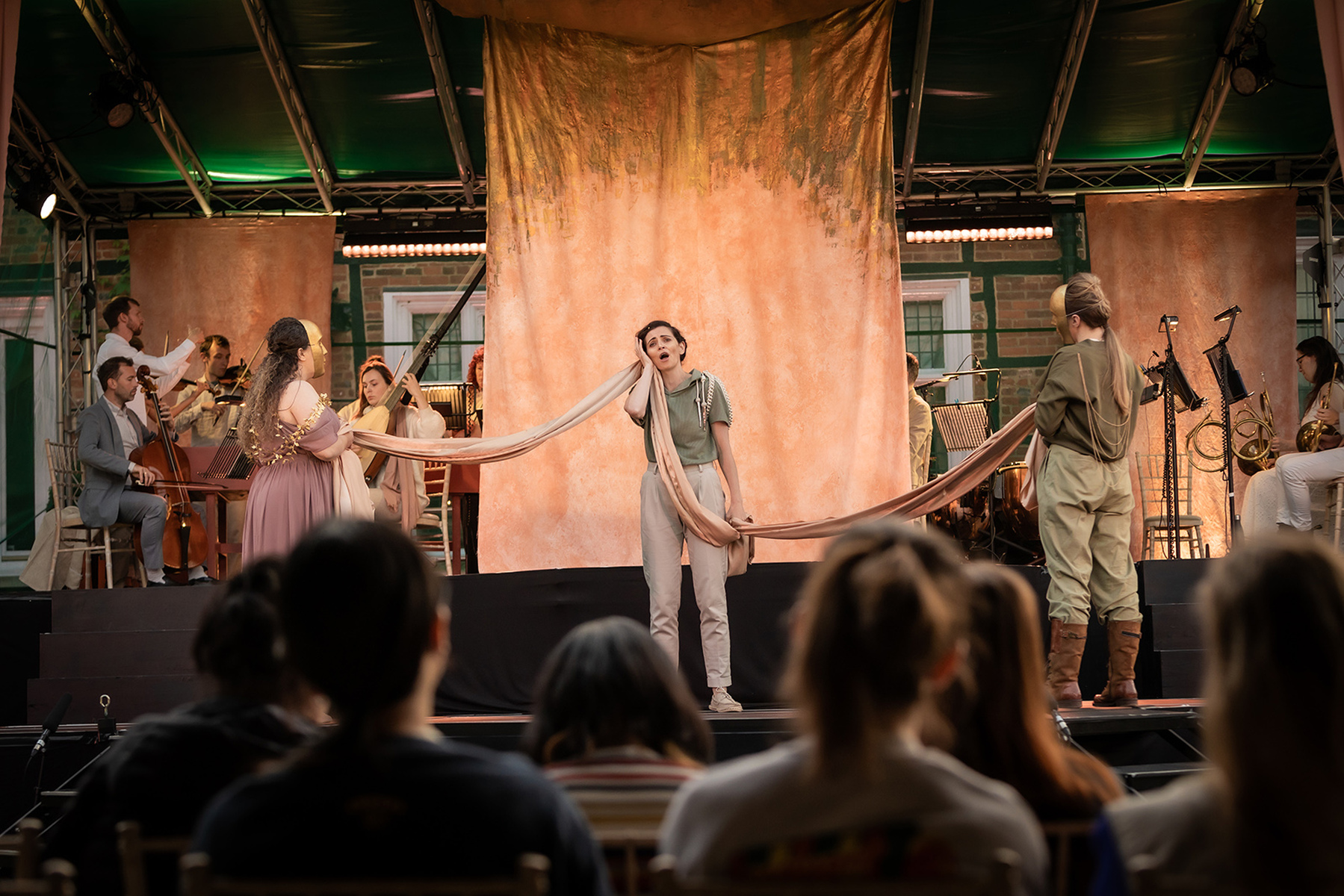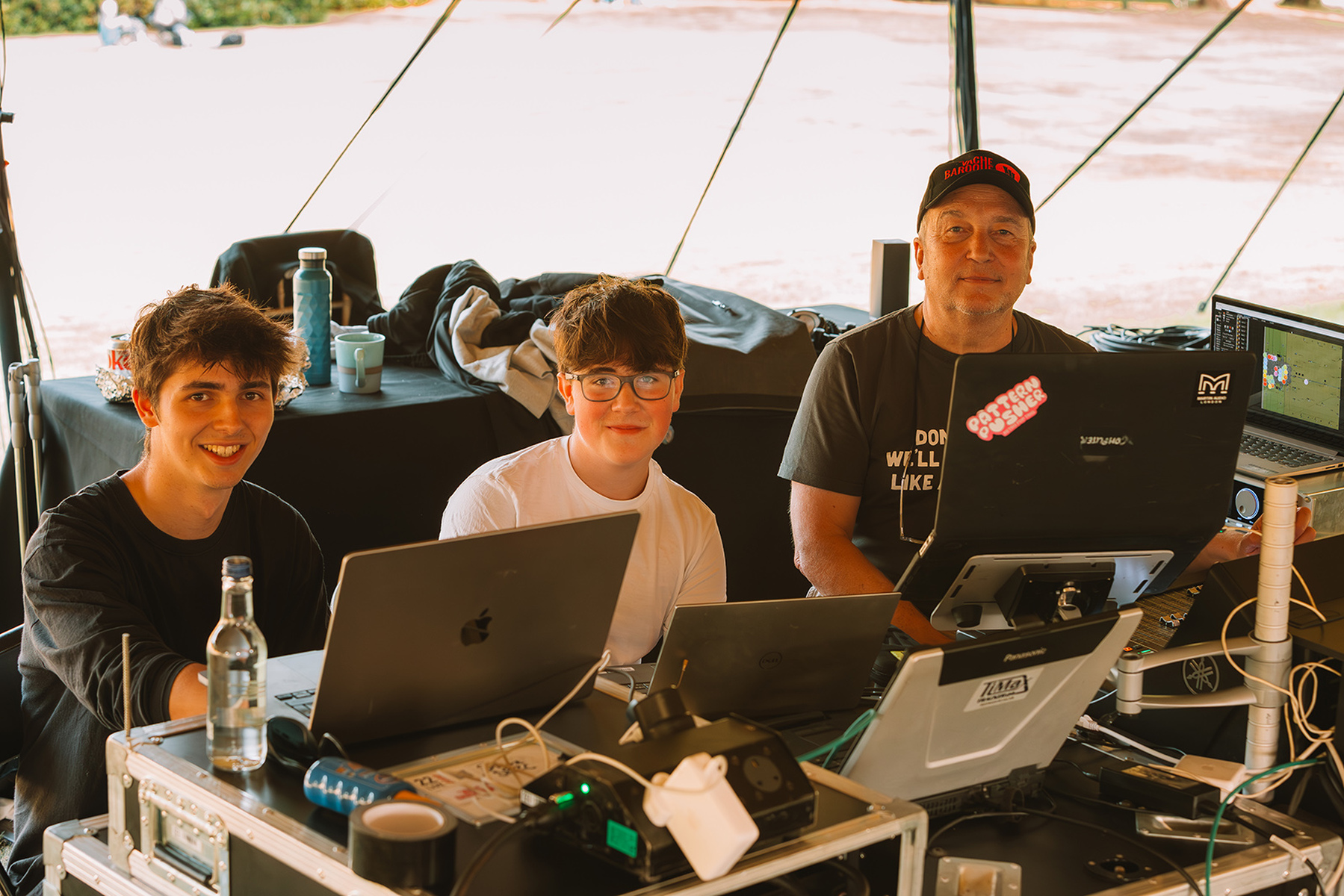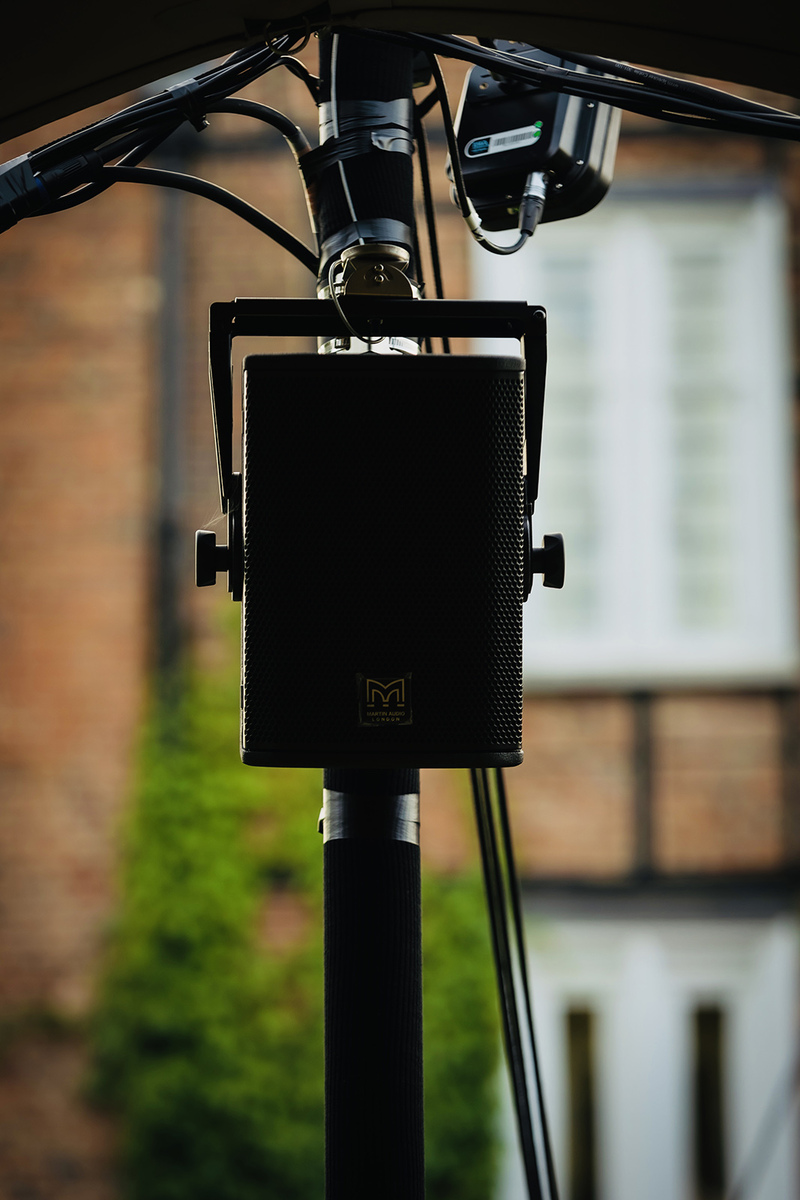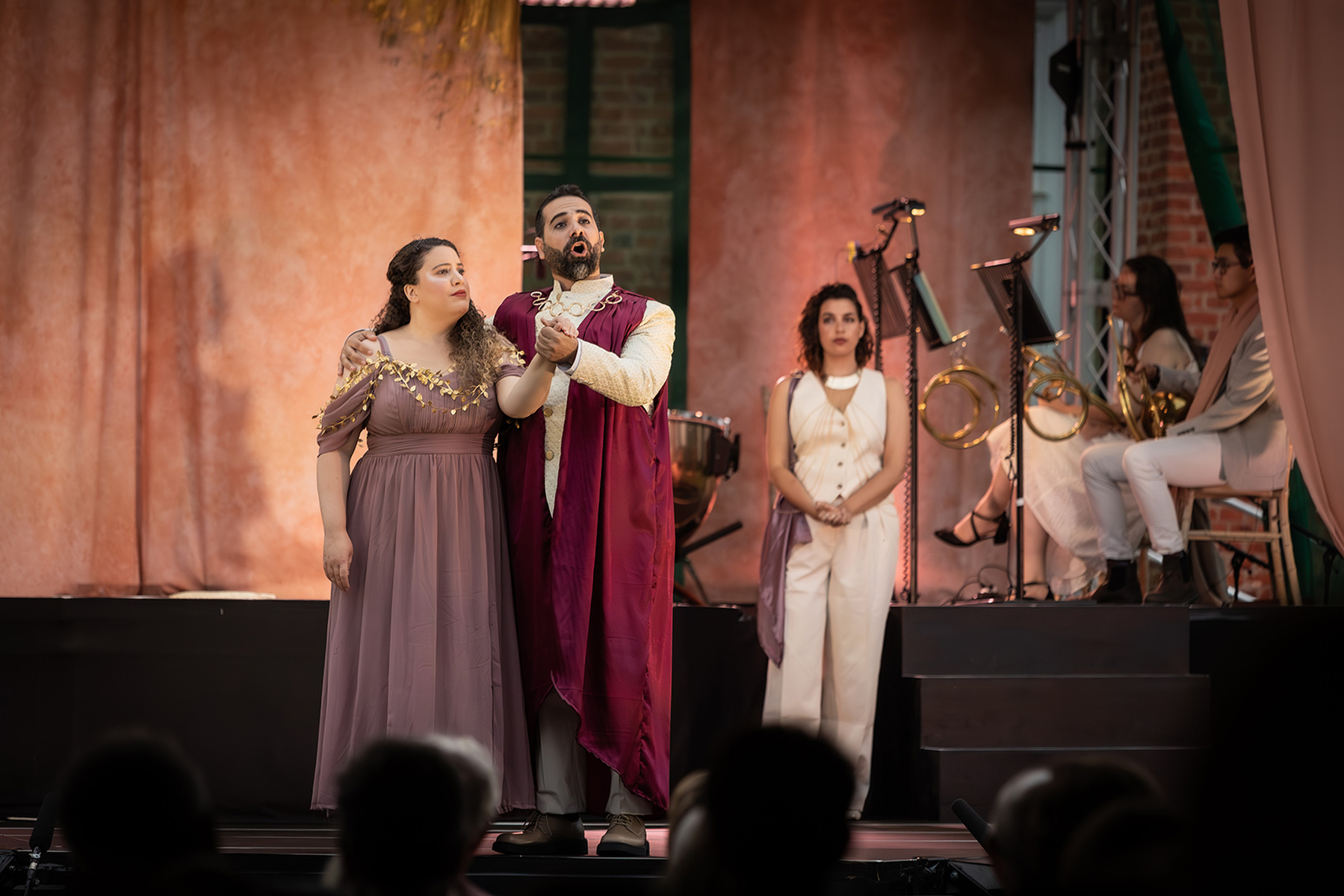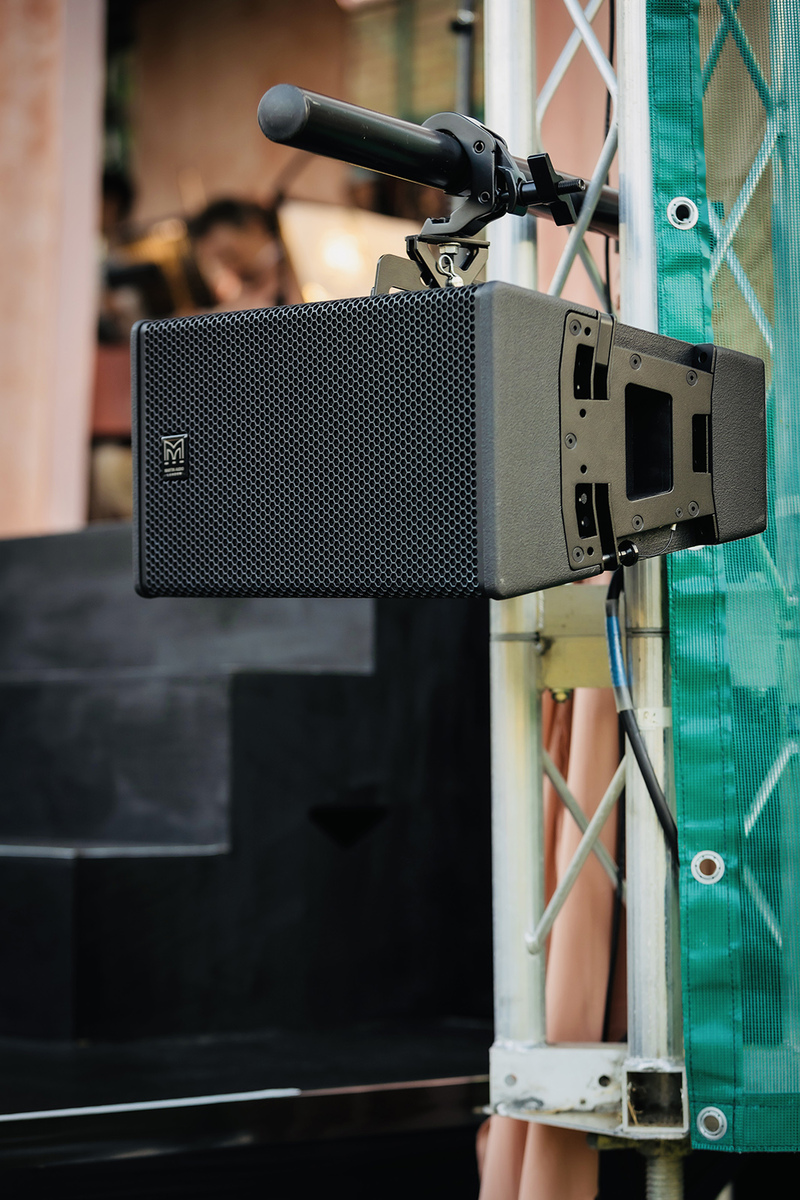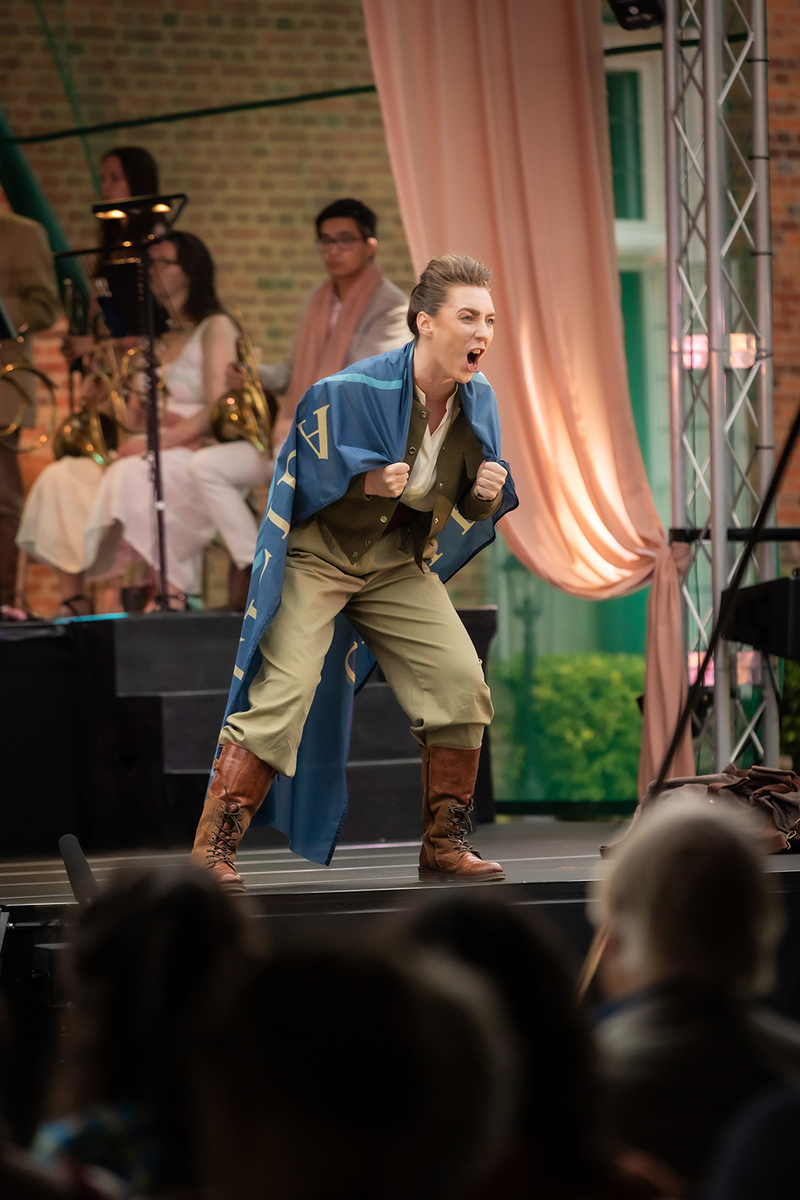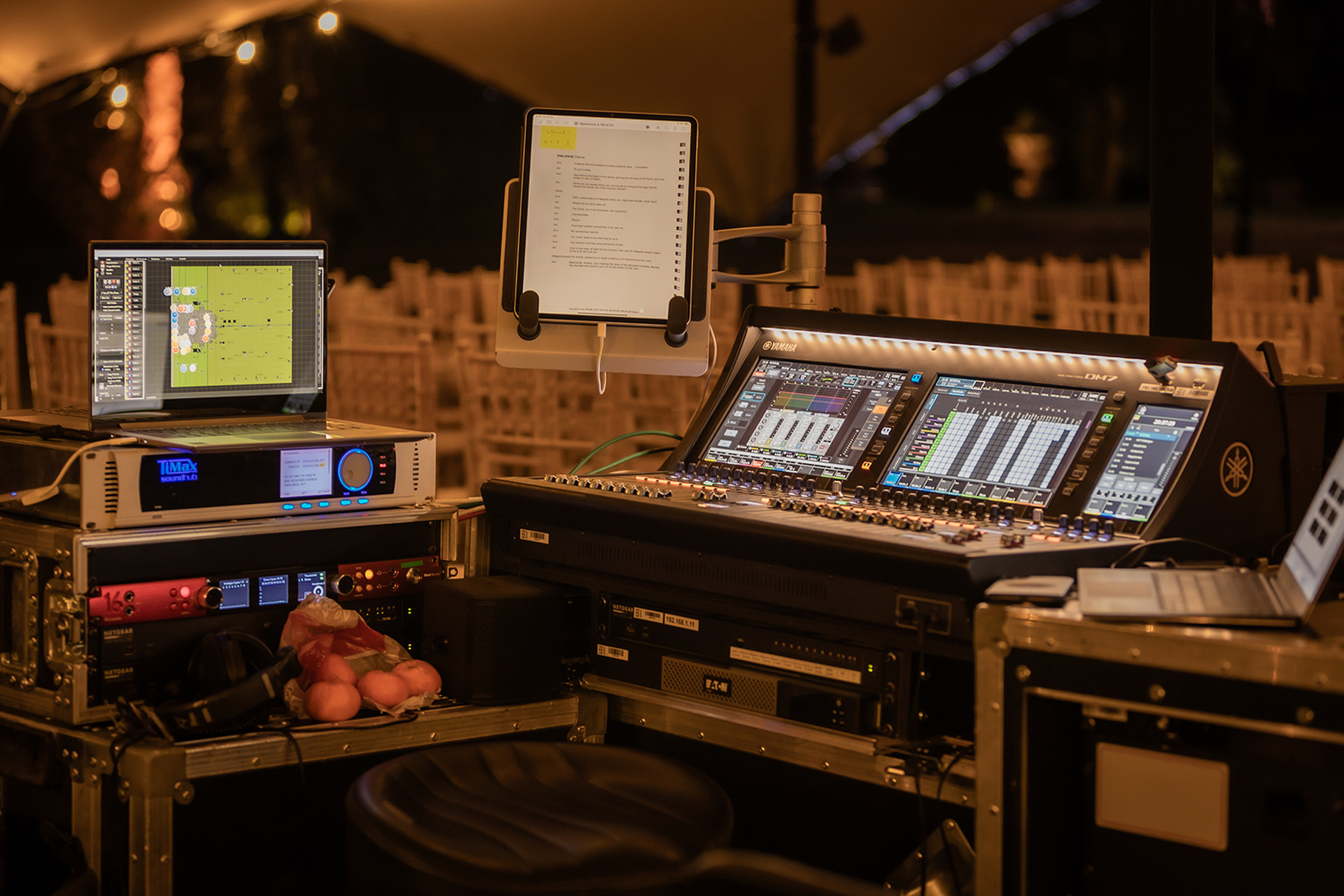VACHE BAROQUE BRINGS TOGETHER FOCUSRITE BRANDS FOR OPERATIC MIRACLE
Performances of Pergolesi’s 1735 three-act opera L’Olimpiade were experienced as never before by audiences in the grounds of The Vache, a Grade II*-listed estate in Chalfont St. Giles, recently.
A cast of seven members of operatic company Vache Baroque (plus narrator) delivered Pergolesi’s arias under the sensitive direction of Laura Attridge, while the 17-piece orchestra, led by Jonathan Darbourne, helped deliver a playful interpretation of this Olympics-style story, from authentic early music instruments.
However, the real breakthrough was the immersive soundscape created for audiences of up to 200 per performance, seated al fresco under a stretch canopy, which simulated a purpose-built concert hall. This was achieved by judicious use of reverb and delay. Tricking the senses was the TiMax SoundHub spatial reinforcement, artfully guided by TiMax TrackerD4 stage trackers worn by the performers, and played out through a series of discreet Martin Audio point source loudspeakers. This enabled visitors to forget that they were seated outdoors in the rain, or even experiencing any sound reinforcement at all.
The challenge had been to provide sound reinforcement without any evidence of amplification. The fact that this was all deliverable within the portfolios of a single pro audio consortium—namely the Focusrite Group—along with their rental partners 22live, is all the more remarkable.
Dom Harter (Managing Director of the Focusrite Group’s live and installed sound brands) had initially been approached for assistance by a distant relative (and patron of the company), bemoaning the lack of adequate sound. “The fact that Vache Baroque is a charity, and the money they raise enables them to undertake valuable outreach work for schools in the area, was reason to get involved. We were delighted that with 22live we could ensure high production values.”
Already involved in the process was Dom’s 15-year-old son, Elijah (who has been mixing local musicals and shows), and the journey began. Harter’s first port of call was to experienced operatic and classical sound designer Simon Honywill, who has enjoyed a long relationship with Focusrite’s premier loudspeaker brand, Martin Audio, latterly merging their technology with that of TiMax’s spatial audio, show control and stage-tracking technology. It is this that takes audience engagement to a new level.
Honywill drew up a specification. His audio visualisation ‘model’ was constructed in Martin Audio’s DISPLAY (3D) predictive software, before the TiMax PanSpace entered the workflow (effectively making the spatialisation visible in the mind’s eye). The loudspeaker locations were then immediately ‘recognised’ by TiMax. Honywill then instructed TiMax to automatically render the space with Image Definition spatial objects to define where he would want audio source objects to emanate from, both on-stage and in surround for upmixed ‘virtual room’ reverbs.
This was one of the best sounding concerts I’ve ever been involved with.
Sensing the purity of Baroque opera, and the integrity of the traditional instruments, Honywill rationalised that “with TiMax, we could develop a sound system that would basically ‘disappear’. It would simply ‘lift’ everything and the imaging would remain true to life to what was taking place onstage. No-one would know it was there.”
The sound engineer allayed any fears among the ensemble by ensuring that the most obtrusive loudspeaker would be the discreet pair of Martin Audio TORUS 8, mounted on poles either side of the pros arch (the pair of designated SXCF118 subs were already recessed out of sight). This formed a foundation from where the sound from the orchestra would emanate. However, the bulk of the heavy lifting was done by Martin Audio’s compact FlexPoint FP6 and FP4, distributed across the multi-layered staging areas.
FP4s provided front fills, further forward, a row of four FP6 primarily handled vocal image reinforcement, while an additional 24 FP4s on poles were arranged in an audience surround delay system; some were towards the stage as a dedicated reverb system for artistic and spatial distribution. This helped deliver a lift in level towards the back row of around 6dB.
Said TiMax director, Robin Whittaker, “We were basically playing audio dominos with the various wavefronts through the space, getting them organised within a time window which was constantly being modified as people moved around.” TiMax ensured everyone heard the loudspeakers a tad later than any voice or instrument, thus perceptually localising to the performance. TiMax TrackerD4 constantly maintained this imaging as performers moved around the stage.
The speakers were powered by six multichannel iKON iK81 DSP amplifiers and controlled from a Yamaha DM7 digital console, supplied along with the DPA mics, Shure Axient radios and control racks by 22live.It was in the DM7 that the reverbs were generated. “We used the X-Verb reverb and onboard Rupert Neve compressors … a bit of multiband compression as well,” he said.
But it was in the TiMax environment that the magic truly took place. “The trackers were crucial to maintain the illusion of the sound system not being there,” said Honywill. “And they worked brilliantly. Both musicians and singers absolutely loved it.” The imaging and spatially upmixed reverbs created the impression that the opera was taking place in an impressive auditorium rather than a back garden.
The show had required delicate balancing at the mix position throughout—not only in levels, but in killing the reverb during dialogue and reintroducing it in during the singing. “Subtle adjustment of reverbs can make a huge difference in how convincing the sound system is,” he explained. “And at no point did I even stop to consider that we had to EQ the PA; because it just didn’t need it.”
Dom Harter was equally positive. “Effectively there were only 12 reverb-only loudspeakers; you don’t want to completely simulate the acoustics of a church because you’re in a tent, but if you don’t do something then it just sounds ridiculously dry. When the reverb speakers were pointed upwards it was almost impossible to hear them generating reverb … it was just washing over you from above which is exactly what it would do if you were in a building.
“This was one of the best sounding concerts I’ve ever been involved with. It all starts on stage—and the musicians themselves are phenomenal.”
The opera critics agreed. One wrote, “The sound design was excellent and there was little sense that we were not listening to a natural acoustic.”
According to Simon Honywill TiMax is the spatial device he has found most convincing. “It is the next step in producing what I would call ‘true audio’.”
And Jonathan Darbourne, Vache Baroque Artistic Director & Co-Founder, stated, “Outdoor performance of traditionally acoustic music comes with many considerations, not least when Baroque-era instruments are being used. The sound team were extremely sensitive to balancing amplification with authentic effect which was very impressive.”
But the final word came from Dom Harter himself. “This was a great opportunity to show all our brands … and on top of that we recorded the show through Focusrite gear as well!”
As the popular saying goes, ‘teamwork makes the dream work’.
Photography by the Photography Shed.
